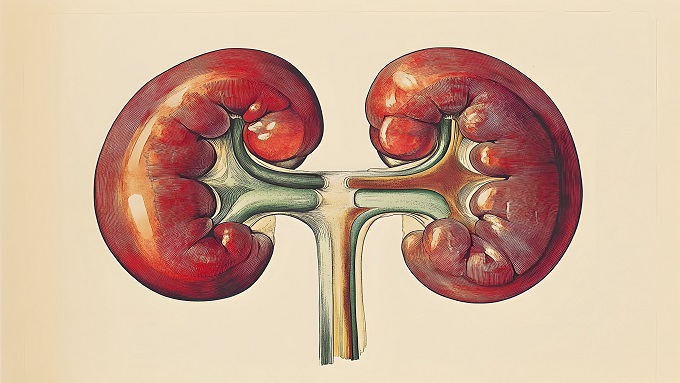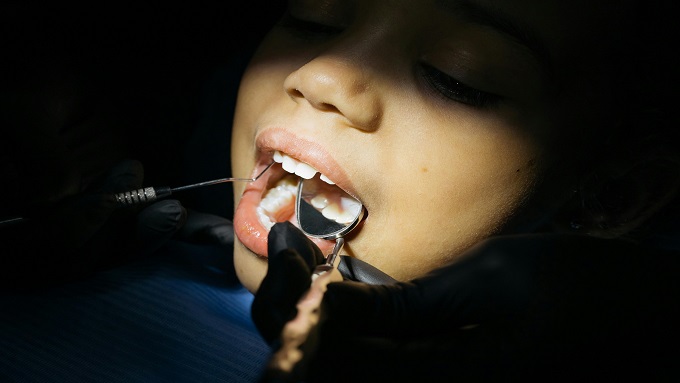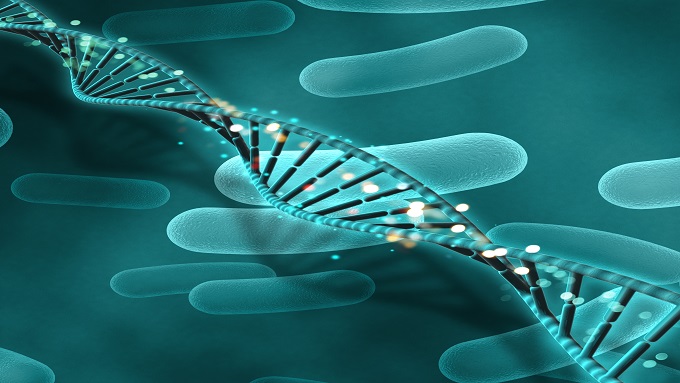DEMOGRAPHIC CHARACTERISTICS AND ABO BLOOD GROUP GENOTYPES DISTRIBUTION AMONG SICKLE CELL ANEMIA PATIENTS IN BIRNIN KEBBI, NORTHWESTERN NIGERIA

Downloads
Highlights
- Sickle cell anemia affects both males and females in Birnin Kebbi and is predominant among children between 1 to 10 years of age.
- It is also more prevalent but less severe among individuals with O- and A+ ABO blood groups in the city.
Abstract
Background: Demographic information and ABO blood group genotypes have been shown by studies to be useful tools in the management of sickle cell anemia. Regrettably, there is a dearth of literature on this information in Birnin Kebbi, northwestern Nigeria. Objective: This study determined demographic characteristics, ABO blood group genotypes, and sickle cell genotypes of sickle cell anemia patients in Birnin Kebbi. Material and Method: A structured checklist was used to collect data from the medical records of 99 patients who attended the Federal Medical Center in the city between November 2022 to November 2023. Result: The results revealed that most of the patients fell within the 1 to 10 years age group, comprising 44 individuals (44.4%), and the 11 to 20 years age group, comprising 33 individuals (33.3%). Of the patients, 48 (48.5%) were males, while 51 (51.5%) were females. Patients with ABO blood genotype O- (33.3%) and A+ (18.0%) were the most prevalent and least severely affected, while blood groups O+ (3%) and AB- (6%) were the least prevalent and most severely affected. Two variants of sickle cells (HbSS and HbSC) were identified, with HbSS (92.9%) being the most prevalent. Conclusion: Based on these findings, efforts should be made to ensure an ample blood supply with groups O-, A, and AB+ in blood banks. Moreover, studies have shown ABO blood groups to influence responses to diets, so precision medicine tailored to individual patients' blood groups is recommended. Individuals with O+ and AB- -blood groups should be given special attention, as they exhibit the severe form of the disease.
Abboud, M. R. 2020. Standard management of sickle cell disease complications. Hematology/Oncology and Stem Cell Therapy, 13(2): 85–90. doi: 10.1016/j.hemonc.2019.12.007.
Adigwe, O. P., Onoja, S., Onavbavba, G. 2023. A critical review of sickle cell disease burden and challenges in Sub-Saharan Africa. Journal of Blood Medicine, 14: 367–376. doi: 10.2147/JBM.S406196.
Ahmed, S., Kagu, M., Ibrahim, U. 2014. Correlation between ABO blood group and vaso-occlusive crisis among adult patients with sickle cell anemia in northern Nigeria. The Egyptian Journal of Haematology, 39(4): 227. doi: 10.4103/1110-1067.153964.
Akpan, I., Asuquo, I. E. 2022. Assessing the relationship between plasma von willebrand factor antigen levels, ABO and Rh (D) blood groups and risk of sickle cell anaemia vaso – occlusive crisis. Saudi Journal of Medicine, 7(8): 428–434. doi: 10.36348/sjm.2022.v07i08.006.
Alagwu, E. A., Akukwu, D., Ngwu, E. E., et al. 2016. ABO/rhesus blood group and correlation with sickle cell disease and type-II diabetes mellitus in South East and South-South of Nigeria. Pharmaceutical and Biosciences Journal: 78–82. doi: 10.20510/ukjpb/4/i5/134669.
Amodu, O. K., et al. 2012. Association of the sickle cell trait and the ABO blood group with clinical severity of malaria in southwest Nigeria. Acta Tropica, 123(2): 72–77. doi: 10.1016/j.actatropica.2012.03.013.
Amoran, O. E., Jimoh, A. B., Ojo, O., et al. 2017. Prevention practices influencing frequency of occurrence of vaso-occlusive crisis among sickle cell patients in Abeokuta South Local Government Area of Ogun State, Nigeria. BMC Hematology, 17(1): 6. doi: 10.1186/s12878-017-0077-9.
Amsalu, W. F., Daniel, G. D. 2019. Distribution of ABO and Rh (D) blood groups among students attending secondary and preparatory schools in Bote town, Oromia national regional state, Ethiopia. International Journal of Science and Technology Education Research, 10(1): 1–8. doi: 10.5897/IJSTER2019.0448.
Anthony, A., Dabara, D. I., Oni, S. S., et al. 2015. Urbanization dynamics and land use pattern in Birnin Kebbi, Nigeria. Conference of the International Journal of Arts & Sciences, 8(1), pp. 41–52. Available at: https://papers.ssrn.com/sol3/papers.cfm?abstract_id=2784498.
Claeys, A., van Steijn, S., van Kesteren, L., et al. 2021. Varied age of first presentation of sickle cell disease: Case presentations and review. Case Reports in Medicine. Edited by F. J. Walther, 2021: 1–7. doi: 10.1155/2021/8895020.
Faruk, J., Adebiyi, M., Ahmad, H. 2022. Clinico-demographic characteristics, morbidity and mortality patterns of sickle cell disease in a tertiary institution. Sahel Medical Journal, 25(2): 52. doi: 10.4103/smj.smj_78_20.
Hussaini, M. A., Durbunde, A. A., Jobbi, Y. D., et al. 2019. Assessment of experience, perception and attitude towards premarital sickle cell disease screening among students attending Federal College of Education, Kano, Nigeria. International Journal of Research and Reports in Hematology, 2(1): 15–26. Available at: https://journalijr2h.com/index.php/IJR2H/article/view/8.
IBM Corp. 2012. IBM SPSS Statistics for Windows, Version 21.0. Armonk, NY: IBM Corp.
Jiao, B., Johnson, K. M., Ramsey, S. D., et al. 2023. Long-term survival with sickle cell disease: a nationwide cohort study of Medicare and Medicaid beneficiaries. Blood Advances, 7(13): 3276–3283. doi: 10.1182/bloodadvances.2022009202.
Johnson, K. M., Jiao, B., Ramsey, S. D., et al. 2023. Lifetime medical costs attributable to sickle cell disease among nonelderly individuals with commercial insurance. Blood Advances, 7(3): 365–374. doi: 10.1182/bloodadvances.2021006281.
Katawandja, A. L., Kingwengwe, A. A., Mwamba, E. S. 2020. Knowledge and practices of health providers on the diagnosis and biological monitoring of sickle cell disease in the City of Kindu, in the East of the Democratic Republic of Congo. OALib, 7(9): 1–11. doi: 10.4236/oalib.1106757.
Kingsley, A., Enang, O., Essien, O., et al. 2019. Prevalence of sickle cell disease and other haemoglobin variants in Calabar, Cross River State, Nigeria. Annual Research & Review in Biology: 1–6. doi: 10.9734/arrb/2019/v33i530132.
Lu, D. C. Y., Wadud, R., Hannemann, A., et al. 2021. Pathophysiological relevance of renal medullary conditions on the behaviour of red cells from patients with sickle cell anaemia. Frontiers in Physiology, 12. doi: 10.3389/fphys.2021.653545.
Mbiya, B. M., Disashi, G. T., Gulbis, B. 2020. Sickle cell disease in the Democratic Republic of Congo: Assessing physicians' knowledge and practices. Tropical Medicine and Infectious Disease, 5(3): 127. doi: 10.3390/tropicalmed5030127.
Musyoka, A. M., Zebedayo, K., Mmbaga, B. T. 2018. Prevalence of sickle cell disease among anaemic children attending Mbeya Referral Hospital in Southern Tanzania. The East African health research journal, 2(2): 142–146. doi: 10.24248/EAHRJ-D-18-00015.
National Bureau of Statistics. 2023. Statistical report on women and men in Nigeria, National Bureau of Statistics. Available at: https://www.nigerianstat.gov.ng/pdfuploads/2021_Statistical_Report_On _Women_and_Men.pdf.
Ngwengi, N. Y., Nde Fon, P., Fon Mbanya, D. 2020. Distribution of haemoglobin genotypes, knowledge, attitude and practices towards sickle cell disease among unmarried youths in the Buea Health District, Cameroon. Pan African Medical Journal, 37. doi: 10.11604/pamj.2020.37.109.17864.
Nwabuko, O. C. 2017. Assessment of ABO-rhesus blood groups and hemoglobin concentrations of sickle cell disease pregnant woman at Booking in Nigeria. Hematology & Transfusion International Journal, 5(2). doi: 10.15406/htij.2017.05.00113.
Nwabuko, O. C., Onwuchekwa, U., Iheji, O. 2022. An overview of sickle cell disease from the socio-demographic triangle - a Nigerian single-institution retrospective study. Pan African Medical Journal, 41. doi: 10.11604/pamj.2022.41.161.27117.
Oluwole, E. O., Adeyemo, T. A., Osanyin, G. E., et al. 2020. Feasibility and acceptability of early infant screening for sickle cell disease in Lagos, Nigeria”A pilot study. PLOS ONE. Edited by A. Wonkam, 15(12): e0242861. doi: 10.1371/journal.pone.0242861.
Onimoe, G., Rotz, S. 2020. Sickle cell disease: A primary care update. Cleveland Clinic Journal of Medicine, 87(1): 19–27. doi: 10.3949/ccjm.87a.18051.
Onoja, S. O., Eluke, B. C., Dangana, A., et al. 2021. Evaluation of von Willebrand factor and other coagulation homeostasis profile of patients with sickle cell anemia attending a Tertiary Hospital in Enugu, Nigeria. Medical Journal of Zambia, 47(4): 269–275. doi: 10.55320/mjz.47.4.715.
Otovwe, A., Sunday, U. I., Rumi, O. B., et al. 2019. Knowledge and attitude of premarital genotype screening among women of child-bearing age in Kumo-Akko Local Government Area of Gombe State Nigeria. Open Journal of Public Health, 1(2): 1–4. Available at: https://www.remedypublications.com /open-journal-of-public-health-abstract.php?aid=5591.
Sacomboio, E. N. M., Sebastií£o, D. T., Sacomboio, F. de J. C. F. 2020. Sickle cell trait and blood groups (ABO and Rh) in Angolans submitted to hemoglobin electrophoresis. Hematology and Oncology: Current Research, 2(1), pp. 1–7. Available at: https://meddocsonline.org/hematology-and-oncology-current-research/sickle-cell-trait-and-blood-groups-ABO-and-Rh-in-angolans-submitted-to-hemoglo bin-electrophoresis.pdf.
Sanni, U. A., Lawal, T. O., Musa, T. L., et al. 2021. Prevalence and outcome of snake bites among children admitted in the Emergency Pediatric Unit, Federal Medical Centre, Birnin Kebbi, Nigeria. Cureus, 13(8). doi: 10.7759/cureus.17413.
Sepulveda, J. M. G., Yang, J. C., Reed, S. D., et al. 2023. Preferences for potential benefits and risks for gene therapy in the treatment of sickle cell disease. Blood Advances, 7(23): 7371–7381. doi: 10.1182/bloodadvances.2023009680.
Thomson, A. M., McHugh, T. A., Oron, A. P., et al. 2023. Global, regional, and national prevalence and mortality burden of sickle cell disease, 2000–2021: A systematic analysis from the Global Burden of Disease Study 2021. The Lancet Haematology, 10(8): e585–e599. doi: 10.1016/S2352-3026(23)00118-7.
Wastnedge, E., Waters, D., Patel, S., et al. 2018. The global burden of sickle cell disease in children under five years of age: A systematic review and meta-analysis. Journal of Global Health, 8(2). doi: 10.7189/jogh.08.021103.
Yahaya, T., Abdullahi, H., Muhammad, Z., et al. 2023. ABO blood group genotypes and demographic traits in susceptibility to type 1 diabetes mellitus in Lagos, Southwest, Nigeria. Nigerian Journal of Physiological Sciences, 37(2): 199–205. doi: 10.54548/njps.v37i2.6.
Yahaya, T. O., Oladele, E. O., Mshelia, M. B., et al. 2021. Influence of ABO blood groups and demographic characteristics on the prevalence of type 2 diabetes in Lagos, southwest Nigeria. Bulletin of the National Research Centre, 45(1): 144. doi: 10.1186/s42269-021-00603-0.
Yahaya, Ta., Oladele, E., Ahmed, H., et al. 2022. Distribution of ABO blood groups and selected diseases among students of Federal University Birnin Kebbi, Nigeria. Suranaree Journal of Science & Technology, 29(1): 1–8. Available at: https://www.researchgate.net/publication/358967 753_DISTRIBUTION_OF_ABO_BLOOD_GROUPS_AND_SELE CTED_DISEASES_AMONG_ STUDENTS_OF_FEDERAL_UNIVERSITY_BIRNIN_KEBBI_NIGERIA.
Copyright (c) 2024 Tajudeen Olanrewaju Yahaya, Asiya Koko Attahiru, Abdulgafar Bala Ibrahim, Mutiyat Kehinde Adewale, Adamu Zainab Fari, Abdullahi Saadatu

This work is licensed under a Creative Commons Attribution 4.0 International License.
1. The journal allows the author(s) to hold the copyright of the article without restrictions.
2. The journal allows the author(s) to retain publishing rights without restrictions.
3. The legal formal aspect of journal publication accessibility refers to Creative Commons Attribution 4.0 International License (CC-BY).































